A personal approach: the pioneering home remodeling agency changing the way we look at where we live

Takumi Taniguchi/Store Manager of Mada Ganbarasete Kudasai & Fumiko Matsushita/Arts&Crafts Executive Vice President
Remodeling company Arts&Crafts has always had a bold vision: to make clients’ living space comfortable, welcoming and – most importantly – a perfect fit for each individual. The unique approach of the company is based on getting to know the people who live in the space, thinking thoroughly together about how they want to spend their days, and approaching the project with as much enthusiasm as the client.
The living spaces they’ve created this way are rich in individuality and detail. There is some special alchemy in their person-to-person approach that results in a distinct warm, welcoming feeling in the spaces they create.
We spent time with store manager Takumi Taniguch and Arts&Crafts Executive Vice President Fumiko Matsushita to learn about what they do and why they are so beloved by their clients. In the process, we also learned about the Mada Ganbarasete Kudasai’ initiative, a thrift shop that gives new life to scrap wood and old fittings discarded during renovations.
Working with what’s already there to enable the client’s ideal lifestyle
Arts&Crafts began as a small design office in 1994 and has been innovative from the start.
Although renovation and remodeling are now common choices for homeowners, it was relatively early, in 1998, when the company launched its renovation service and worked on their first remodeling project. From the start, their pioneering approach was inspired by the search for the kind of houses they wanted to live in themselves.
“Every person and every way of life is different, but for some reason, every house has a uniform layout, don’t they?”, Matsushita, the Vice President told us. “Our offering is to create a living space based on one’s lifestyle and preferences, which may be different from the norm, where people fit their needs to a ready-made home layout,”
This approach, which puts the people who will live in the spaces at the center, is the antithesis of the mindset that leads developers to demolish historic buildings, favoring the advantage of the supplier, rather than the person who will live in the space. The result is that every one of the Arts&Crafts remodeled homes has a distinct unique personality.

The approach is different to the norm at every level. They choose products and materials that are more comfortable and last longer than seemingly beautiful shiny new building materials, which look great at first but can lack longevity. Or they might decide to leave the carpenter’s handwriting on some of the building materials, giving a sense of history and personal touch. What Arts&Crafts values is not a temporary and superficial beauty, but rather the history left in the building and the future daily lives of people who will live in it.
The team is concerned with creating spaces that are generous, comfortable, unpretentious and long-lasting. “It’s easy to forget when you’re used to industrial production, but what really matters should be that you can live comfortably and happily, not that it’s high-performance, revolutionary or without a scratch”, says Matsushita. “For example, solid wood flooring gradually gets small cracks, but that’s also a good property of the material, right? I think it is, and I love the changes over time.”
Unique renovations, each with its own rich flavor
Arts&Crafts has had many interesting and unusual renovation and remodeling clients over the years, like the row house in Osaka – when demolition began, the team discovered a mixed wooden and steel structure, which impacted the remodeling plans and led to a new design that took advantage of the building’s history and structure. There was another unique case, where the client requested the entire space to be painted in pink in honor of Marie-Antoinette! The company values and cherishes the personalities of their clients, as well as the personalities of the buildings themselves, resulting in a fascinatingly atypical and characterful portfolio.
The team is particularly proud of the renovation of the Toyokuni House, the oldest Reinforced Concrete Construction (RC) housing complex in Osaka, built in 1932. “It’s really inspiring to find a perfect match between the character of a building and the dreams of its occupants, and with this particular house, I think the occupant and house were destined to come together,” the team explains. “The person who bought the property was a woman who had always been curious about its existence, from a very young age. As a child, when she passed in front of this building on the way home from swimming school, she would say to herself whimsically: ’If I could live here, I would leave my parents’ house.’ She told her family this too!”
After looking at other refurbished properties but not finding the right one, she fell in love at first sight with a room in the house that had been vacant for 40 years. ‘I like the ambience and want to keep it,’ she said; from here we embarked on the renovation.
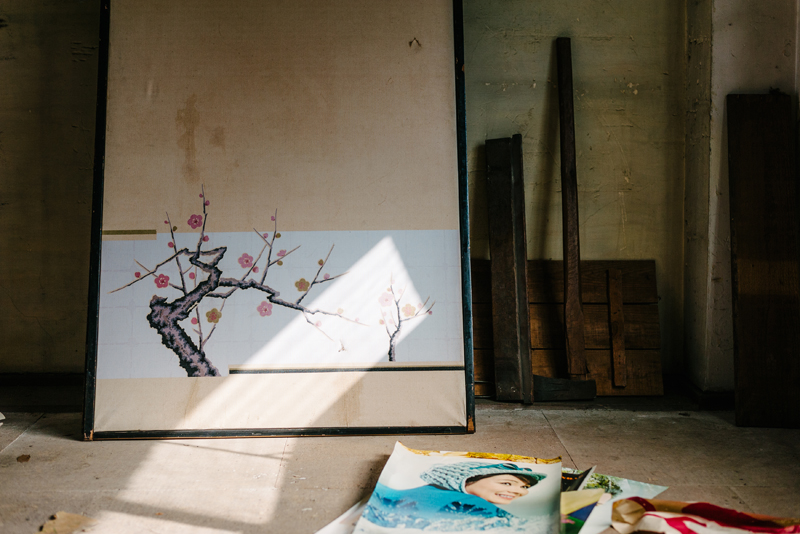
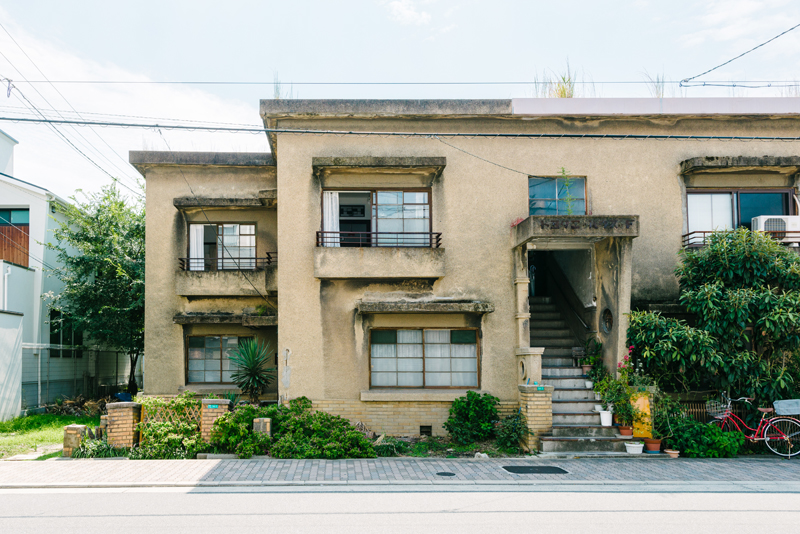
There was a calendar from the ‘70s hung on the wall, and the furniture and toys from that time were still there. For this woman, it was a treasure trove. The renovation was completed in such a way as to carry on the ambience of when the house was first built by retaining as much of the original structure and materials as possible, and proposing a design in which the new equipment, fixtures and fittings still showed elements of the period features.
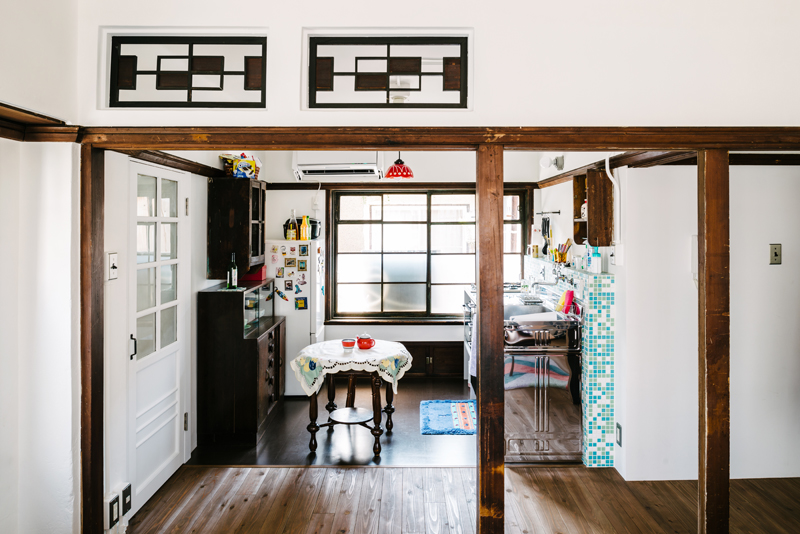
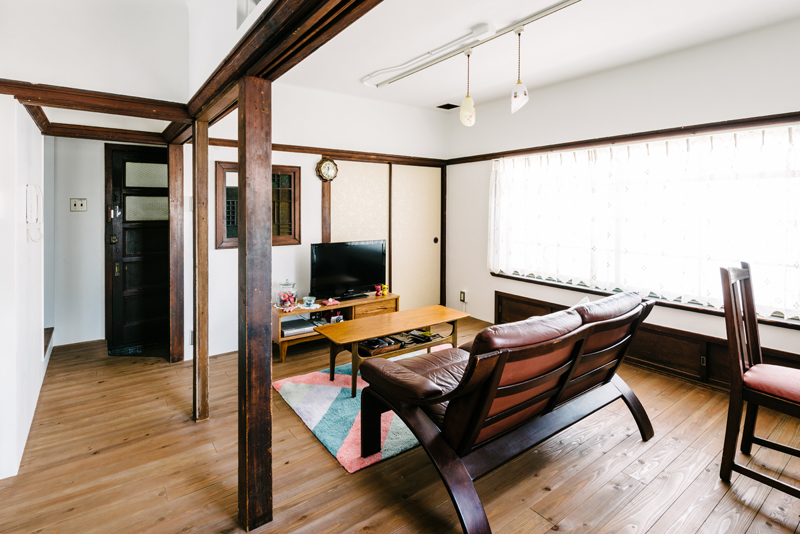
Today, elements like the original walls — made with earth and straw and set on a base of split bamboo – and a decorative round window preserve the original atmosphere of the building, allowing the inhabitants to live here with modern comforts and a sense of history.
Would-be junk from renovation sites get a new life
As the renovation and remodeling business continued to make clients’ dreams come true, the team began to notice another way they could change how things were done. They realized that there were always scrap materials and old fittings left behind on the site post-construction. Arts&Crafts staff began to collect these items, and eventually set up a thrift shop in a corner of their office and showroom.
Take a look around and you’ll find unusual door handles, fusuma panels from sliding doors and elegant light fixtures. There are so many interesting items that whoever sees them can’t help but ask “Where did you come from? And how did you end up here?”! You begin to think about how each of these items were part of someone’s day-to-day life for a long time – each one is imbued with history.
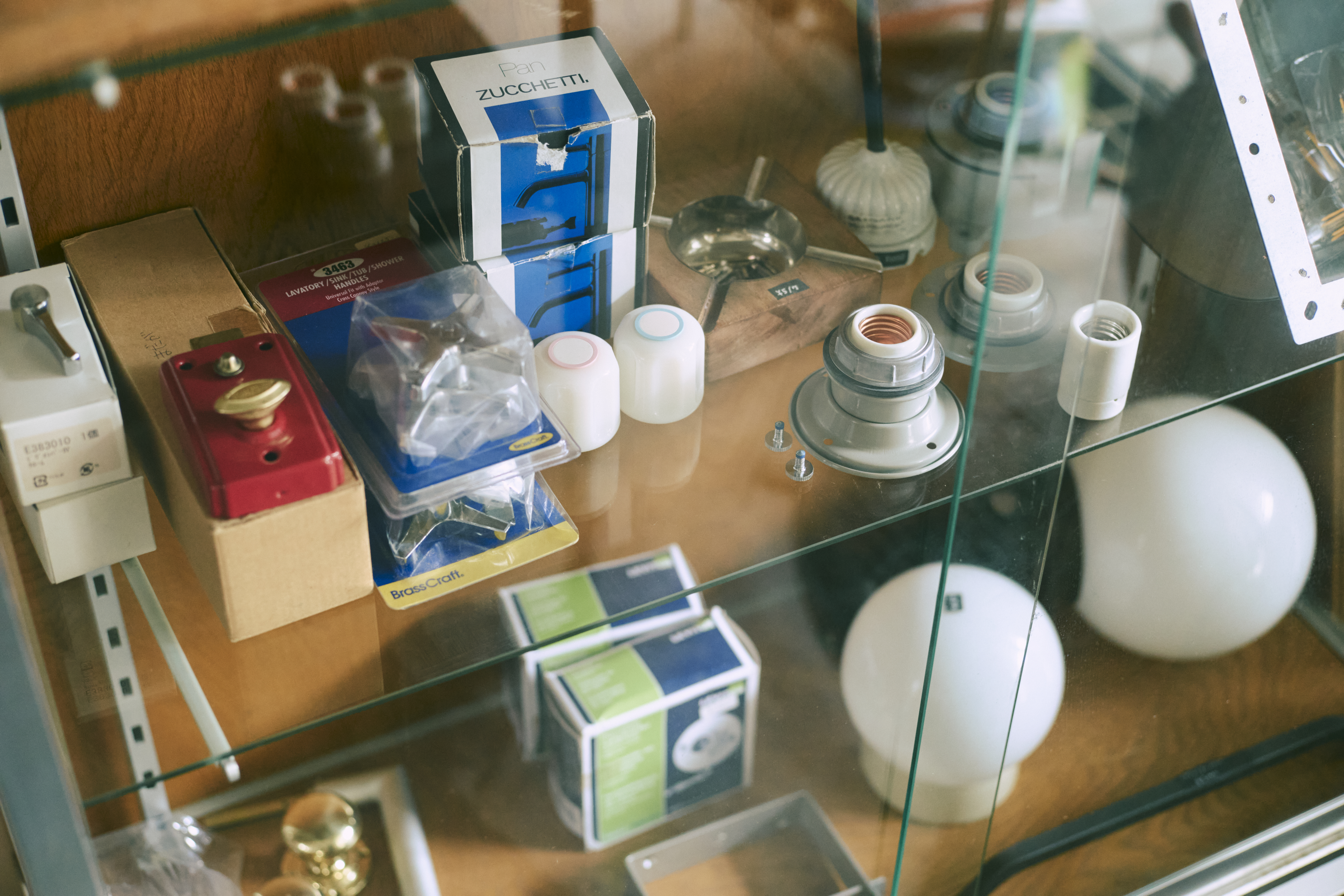
Taniguchi walked us around the collection, showing us some of his favorite curiosities. “This is a traditional fitting with fine bamboo strips called a sudo (bamboo door). It was in the mansion of a wealthy merchant in Sakai City. I’m fascinated by what the old artisans worked so hard to create,” he tells us. “There are many such things to rescue from the sites. The mass-produced items tend to have a slightly cheaper look and feel, or look the same as they are standardized. In contrast, the old ones are uneven but unique because the craftsmen make them one by one,” Taniguchi said.
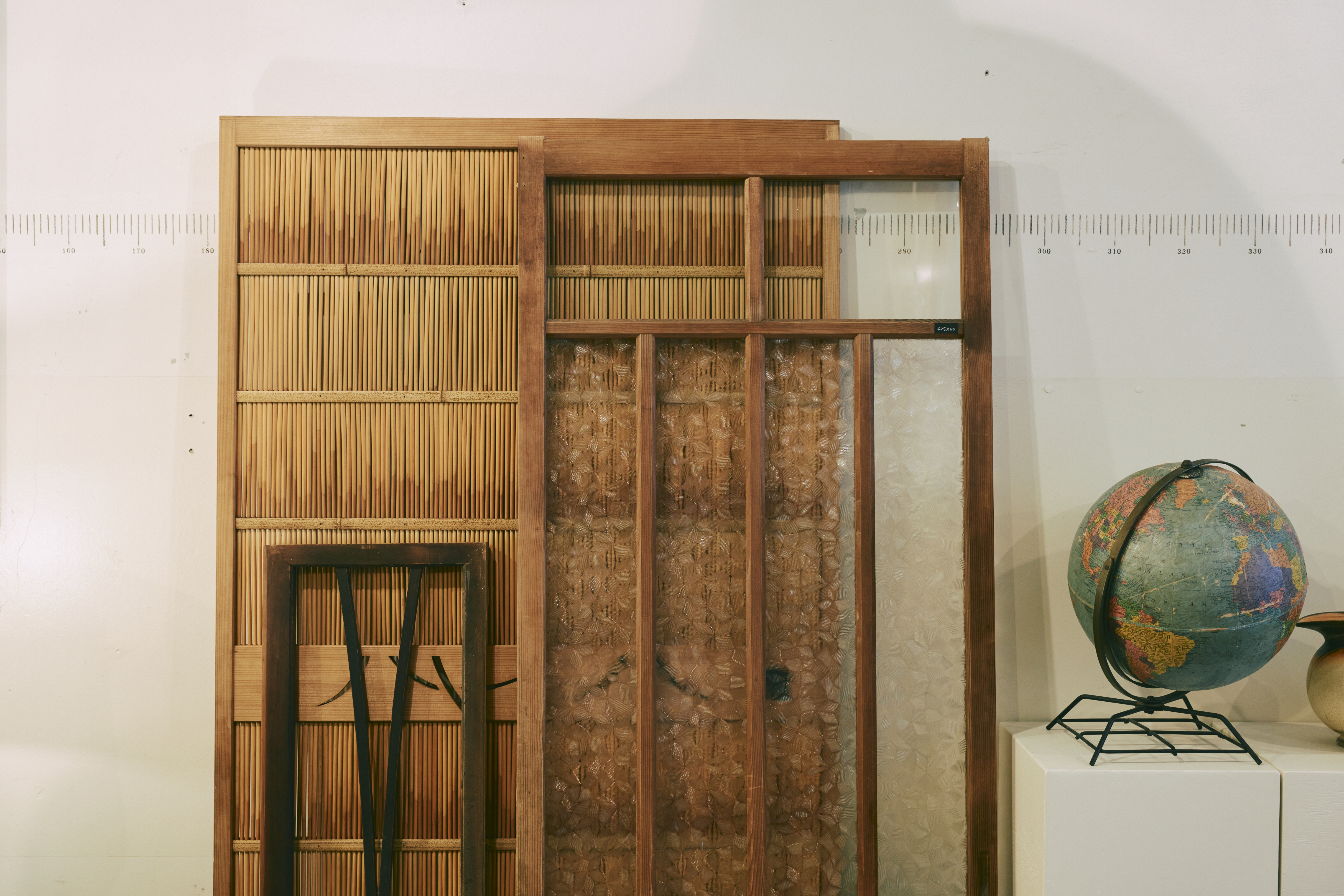
“I hope people find these items interesting, just to admire the beauty, or to reuse in their own unique ways to enjoy them. I feel very fascinated when I see them being used in a completely different way, even though they’ve done what they were meant to do. There are items that you may wonder how people use them, but interestingly enough, our customers invent something new out of those—turning an old sewing machine stand into a table or wash basin, or wiring a water tap into an electrical outlet,” says Matsushita.
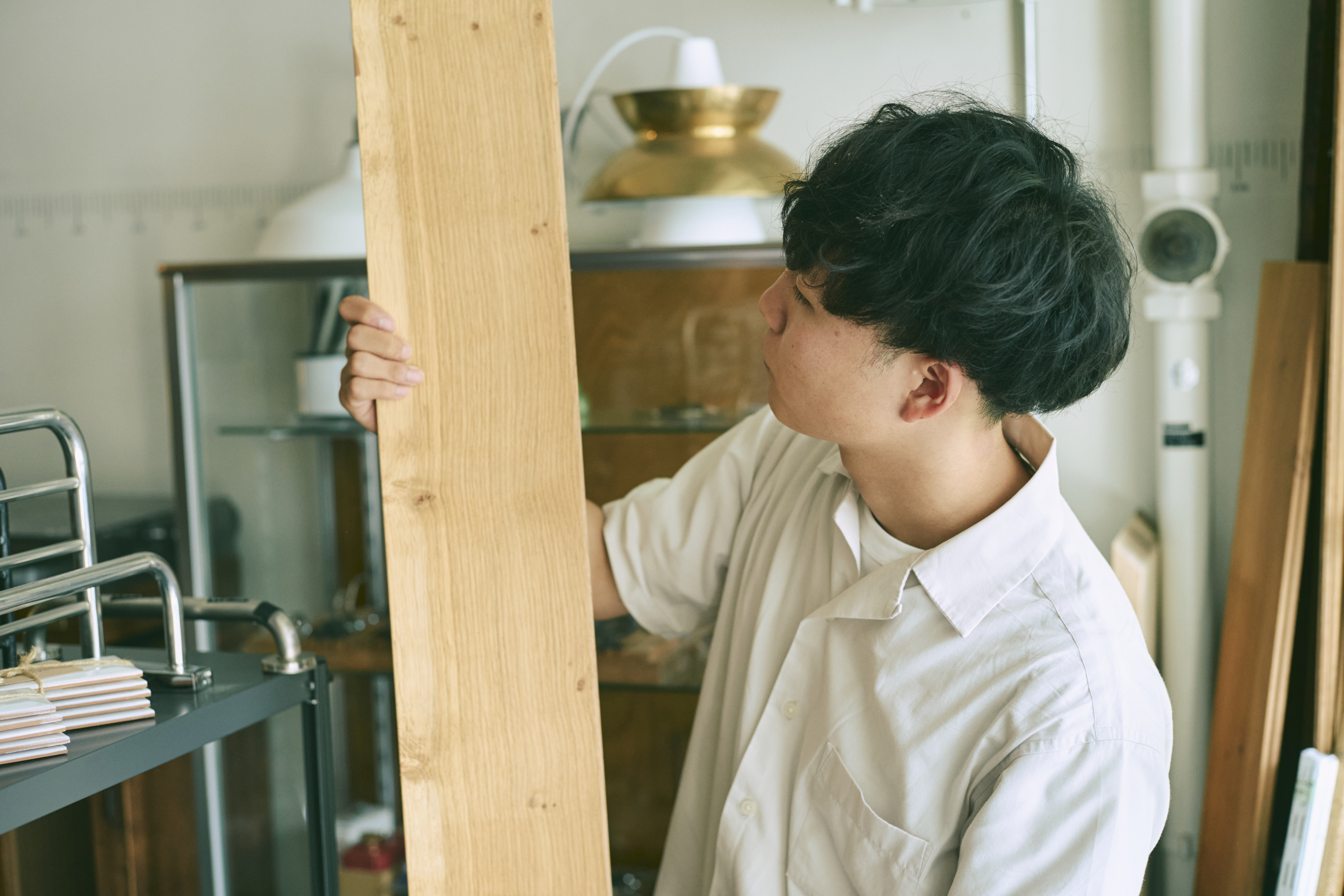
Things that have been serving their old purpose for a long time seem to smile and say ‘I can still be useful!’.
Combatting waste in construction through creativity
Behind both the renovations and the antiquities business Arts&Crafts operates, there’s an unwavering desire to address the environmental challenges of the construction industry.
“In fact, the construction industry contributes a lot of waste with its common practices. Not only what is dismantled, but also a large amount of materials that can still be used will be discarded, and a large amount of end materials will also be put out to order more than the amount used,” say the pair.
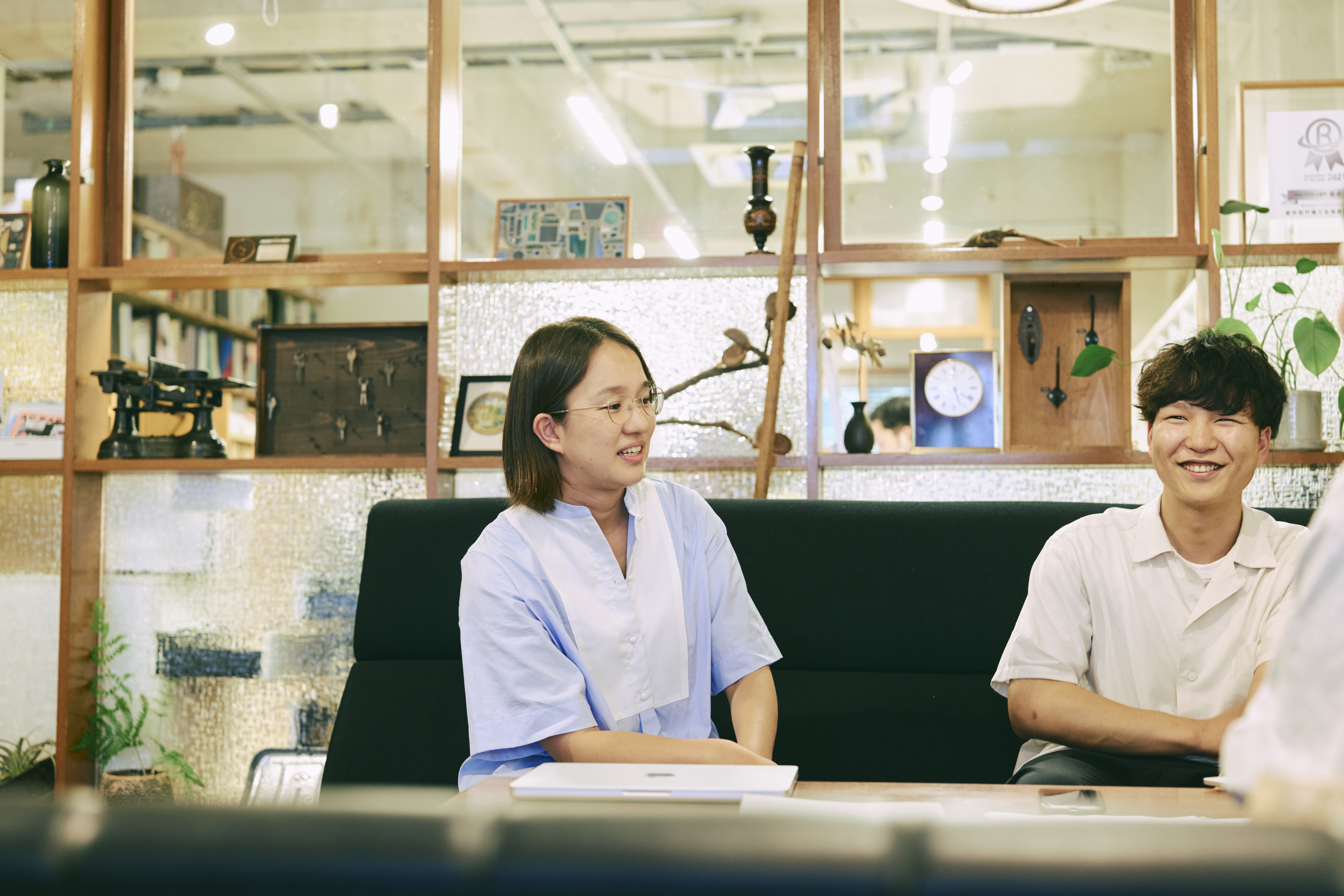
While managing renovation projects that preserve and expand the good qualities of historic objects, Matsushita became more aware of the mainstream industry’s challenges. The current situation in Japan is such that buildings can easily be torn down due to aging, etc., and in the case of newly built condominiums, even a small scratch can lead to a major complaint.
“Through the renovations and thrift shops run by Arts&Crafts, I want people to find value in old things and develop personal, emotional attachment to them, incorporating them in their everyday lives.”
It has been about 14 years since the office was moved to Kyomachibori, a short distance from the city center, in order to make it into a place where people can relax and gather, just like at home. Foreigners who have moved to the area often come to consult about renovations, and foreign tourists often pick up products from the thrift shop, delighted to have a piece of Japanese heritage to take home with them.
Arts&Crafts shows us that we can be more creative when approaching our homes, where we spend so much of our time. Come and see for yourself – we challenge you not to be inspired.
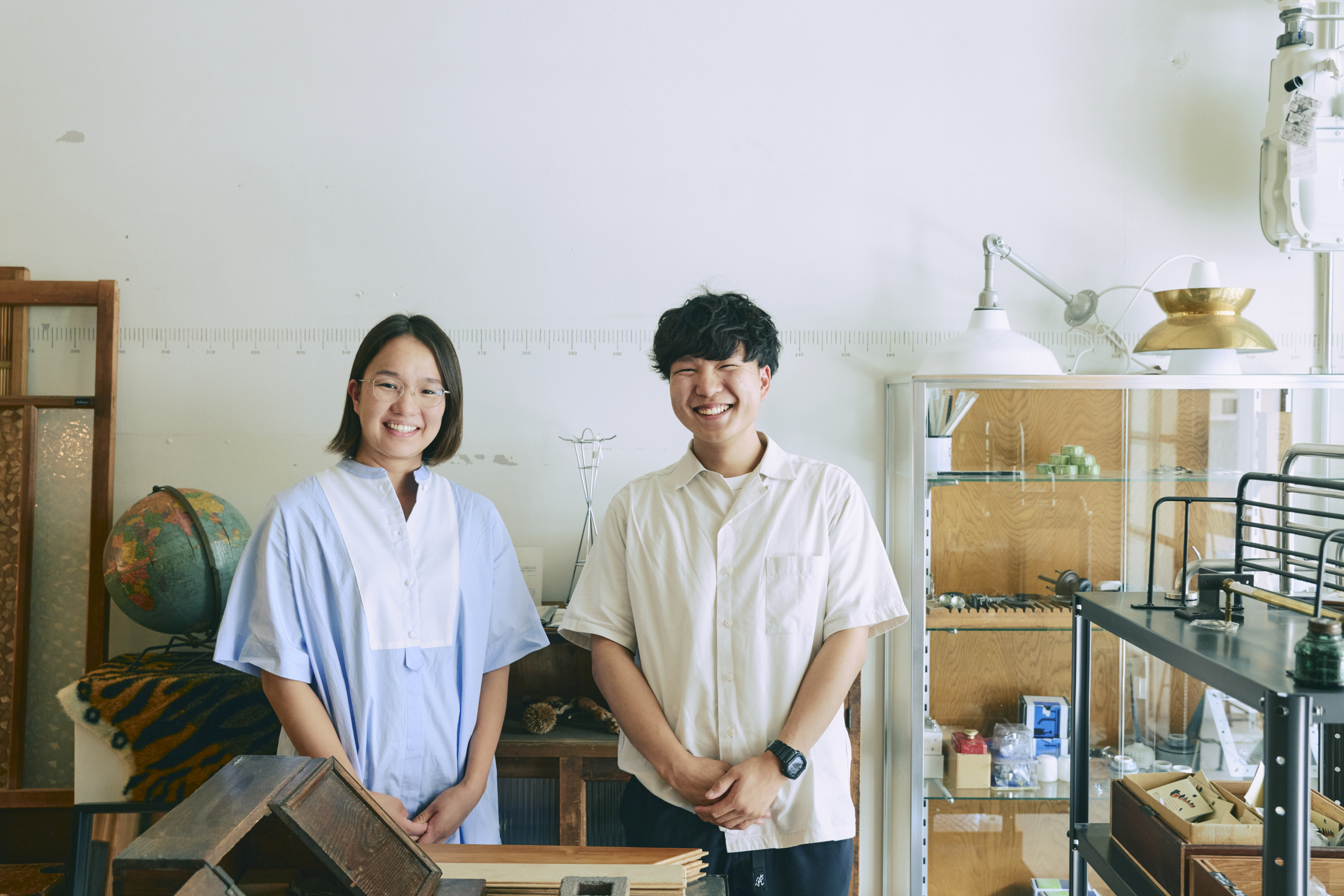
Profile
Arts&Crafts runs a renovation and remodeling business, and also produces and operates Osaka R Fudosan, an online real estate platform, listing properties unique to Osaka. Taniguchi, born in Osaka, works at the company as a renovation consultant and real estate agent for Osaka R Fudosan. He is also in charge of social media operations at Mada Ganbarasete Kudasai. Also born in Osaka and having lived in Switzerland, Matsushita worked as a real estate developer before moving to Arts&Crafts in 2014, where she coordinates renovation projects for her clients.